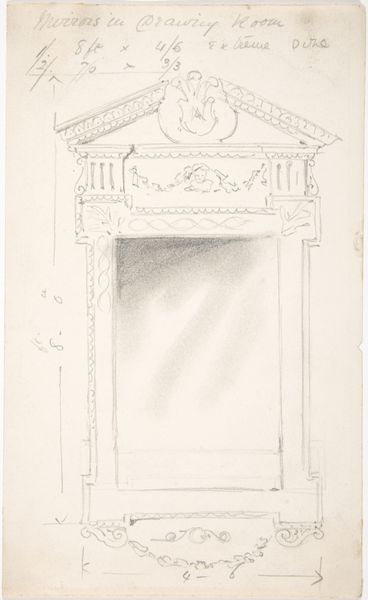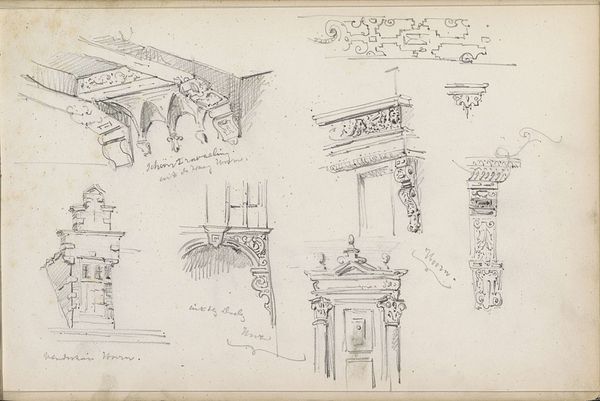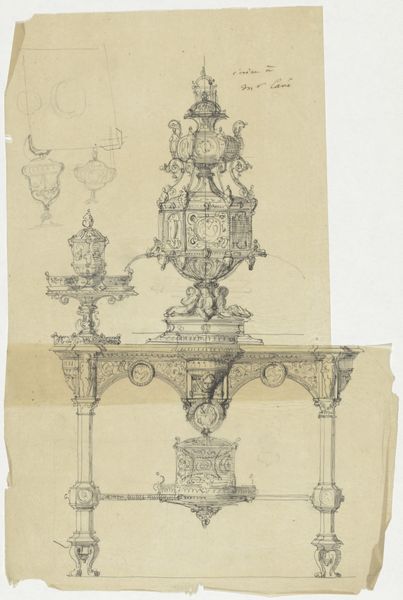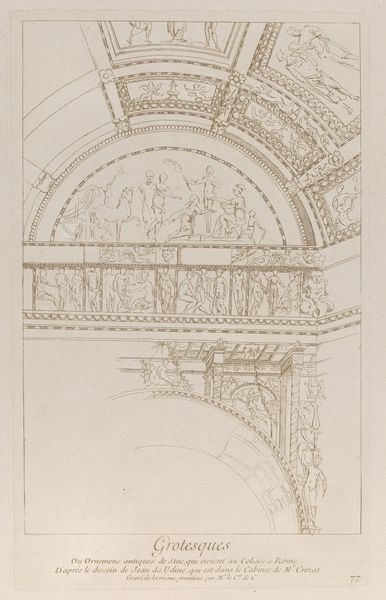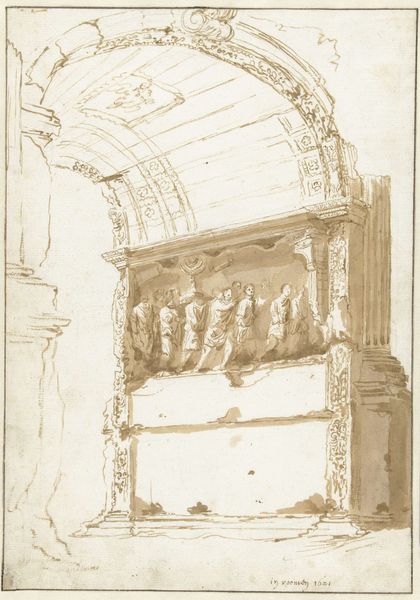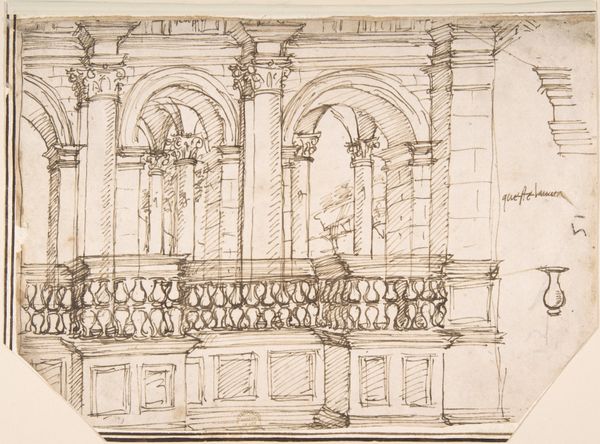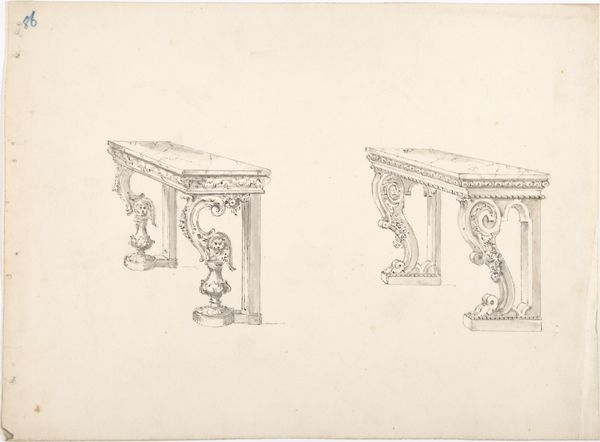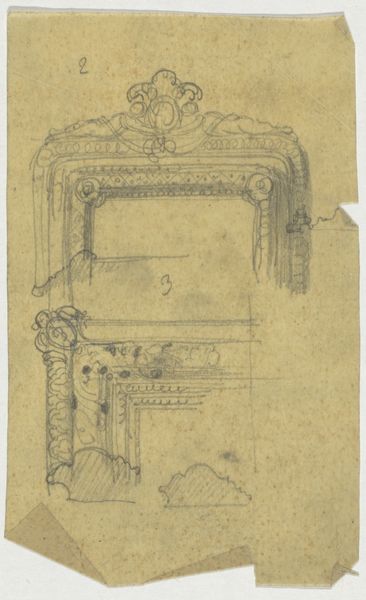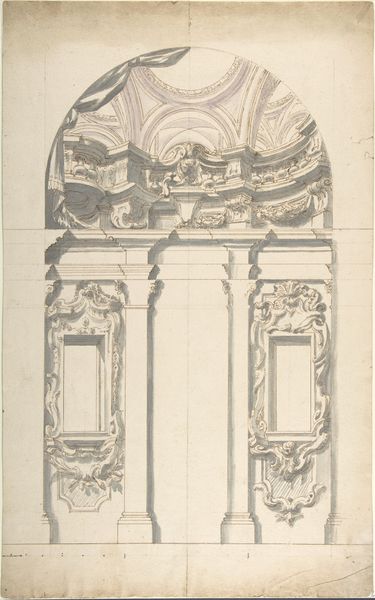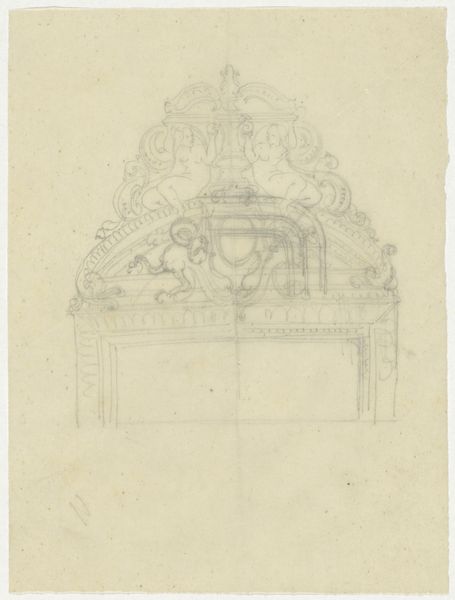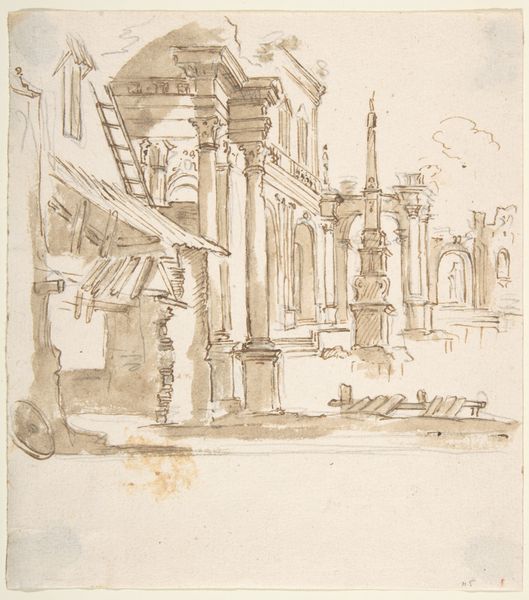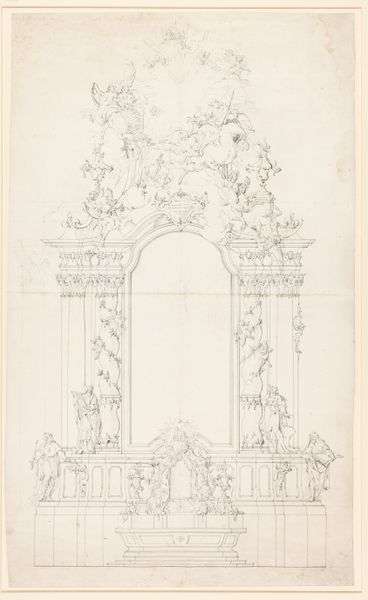
drawing, pencil, pen, architecture
#
architectural sketch
#
drawing
#
medieval
#
pencil sketch
#
pencil
#
architectural drawing
#
architecture drawing
#
pen
#
academic-art
#
architecture
Dimensions: 238 mm (height) x 190 mm (width) (bladmaal)
Curator: Good morning. Today we're looking at "Detalje af korstolene i domkirken i Siena" or "Detail of the choir stalls in Siena Cathedral" by Martinus Rørbye, a drawing completed in 1837 using pencil and pen. Editor: My first thought is that this image feels incomplete somehow, yet deeply compelling in its starkness. There’s an almost haunting quality to these architectural remnants, rendered in such delicate detail, that invites me to consider power dynamics. Curator: An interesting interpretation! Formally speaking, the emphasis on line and the subtle gradations of shading really capture the ornate carvings and the robust structure of the choir stalls. The architectural rendering showcases Rørbye’s mastery of perspective and his eye for detail. The symmetry and classical elements suggest a harmonic balance. Editor: Yes, and beyond the surface, these stalls represent more than just aesthetic harmony. Who sat here? Who was excluded? Cathedrals, historically, functioned as visible representations of power—architectural testaments to the Church's dominion and ideological control. These aren't just beautiful lines and balanced forms. This work embodies the story of inequality. Curator: Perhaps, but I think the artist’s focus here lies more in documenting the beauty and the intricacies of the craftsmanship. Look at the texture he creates through the careful hatching and cross-hatching. The effect evokes the tactile experience of the carved wood, even in a two-dimensional drawing. He's clearly enamored with its structural elegance. Editor: And whose labor was exploited to produce such "elegance"? It's crucial to remember the social history interwoven into the very fabric of this structure. The church's architectural presence was inextricably tied to the community, asserting its authority both spiritually and economically. Curator: It's fascinating how we can view the same artwork through such different lenses. It speaks to the complexity inherent in all art objects. Editor: Absolutely. It reveals how our understanding can constantly evolve as we deepen our awareness of art and history, which leads to a richer experience overall.
Comments
No comments
Be the first to comment and join the conversation on the ultimate creative platform.
